The national workshop for heads of water management organizations (BISA, production units, etc.) organized by the Ministry of Agriculture and Water Resources of Uzbekistan in conjunction with the Land Reclamation Fund under the Ministry of Finance was held on May 29-30, 2015 in Kashkadarya region of Uzbekistan. The workshop was also attended by the staff of a number of projects supported by international donors (WB, SDC, GIZ, GWP CACENA), and the Institute of Water Problems and Irrigation under TIIM. In total, more than 80 leading water experts participated.
The workshop was led by Deputy Minister of Agriculture and Water Resources, Chief of the main department of water resources of Uzbekistan, Khamraev Sh.R. The workshop was devoted to the problems of water resources management, water-saving technologies, repair and rehabilitation of irrigation and drainage facilities, improvement of water users associations.
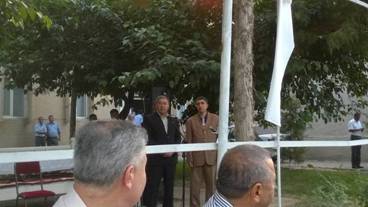
Welcoming speech of the Head of region Mr. Zafar Ruziev and the Deputy Minister Mr. Shavkat Khamraev
The Kashkadarya region is situated in the south of Uzbekistan in the Kashkadarya River Basin on the western slope of the Pamir-Alai mountains. The population is 2,722,900 people (2011). The region's economy is based on agriculture. The share of agriculture in the gross regional product is more than 27.3% (791.5 million dollars).
The Kashkadarya region is the main breadbasket of Uzbekistan and the supplier of cotton and other agricultural products: 10.2% of all agricultural products harvested in the country, as well as more than 10% cotton, 11% corn, 19% of karakul. The most important areas of agricultural production are the cultivation of fine-fiber cotton varieties and cattle breeding. Natural conditions of the area are favorable for growing of grapes, stone fruit trees, fig trees, pomegranates.
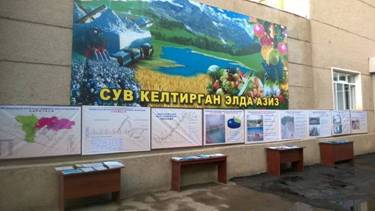
Demonstration materials of the workshop in the Amu-Kashkadarya BISA
The participants visited the Mirishkor canal control station. The information system established in 2010-2011 within the RESP-2 project with the assistance of SIC ICWC for water distribution control was demonstrated to participants.
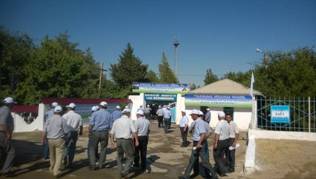 |
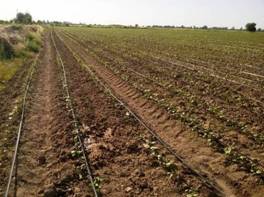 |
the Mirishkor canal control station |
Drip irrigation system for cotton |
The participants visited the seventh pumping station of the Karshi main canal and the hydrometric station at the farmer level too. Participants were shown a watering technique "next nearest furrow" over a black plastic film for cotton. This technology allows to reduce irrigation rates by 40 percent and raise the level of crop yield by 25 percent.
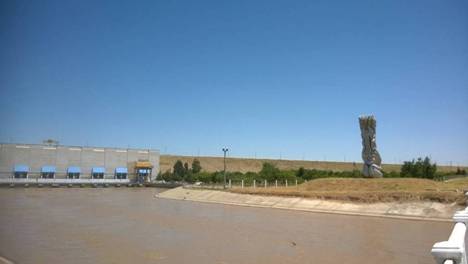
The seventh pumping station of the Karshi main canal
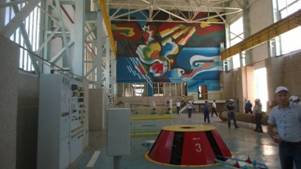 |
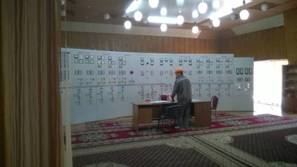 |
The turbine hall of the seventh pumping station of the Karshi main canal |
The control station of the seventh pumping station |
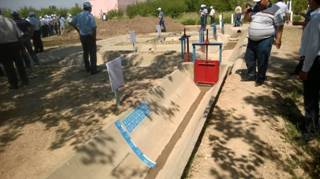
The training hydrometry station at the farmer level
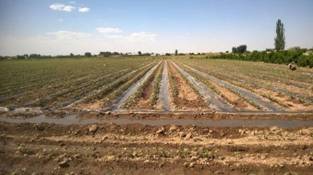 |
 |
Watering technique "next nearest furrow" Wheat of Kashkadarya
The participants also visited the Kamashinsky reservoir, where they got acquainted with the issues of reservoir operation as well as fish production in special fish ponds.
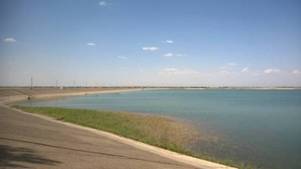 |
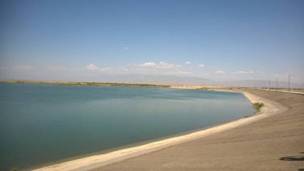 |
The Kamashinsky reservoir at the |
Yakkabag river ( tributary of Kashkadarya river) |
The social program included a visit to the Shahrisabz city which currently is a grand reconstruction of the entire historic district.
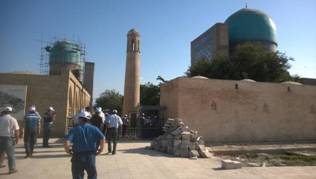 |
 |
The architectural ensemble of Dorus-Saodat mausoleum ("Seat of Power", XIV c). |
Here are buried representatives of the Timurid dynasty |
The workshop was ended with a visit to Hissar Dam on the Aksu river.
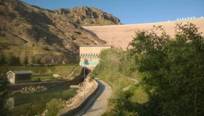 |
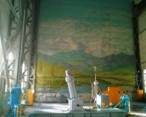 |
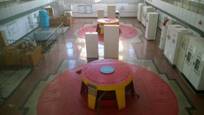 |
Hissarskaya HES
 |
 |
Hissar reservoir |
Outlet canal in the downstream of the Hissarskaya HES |